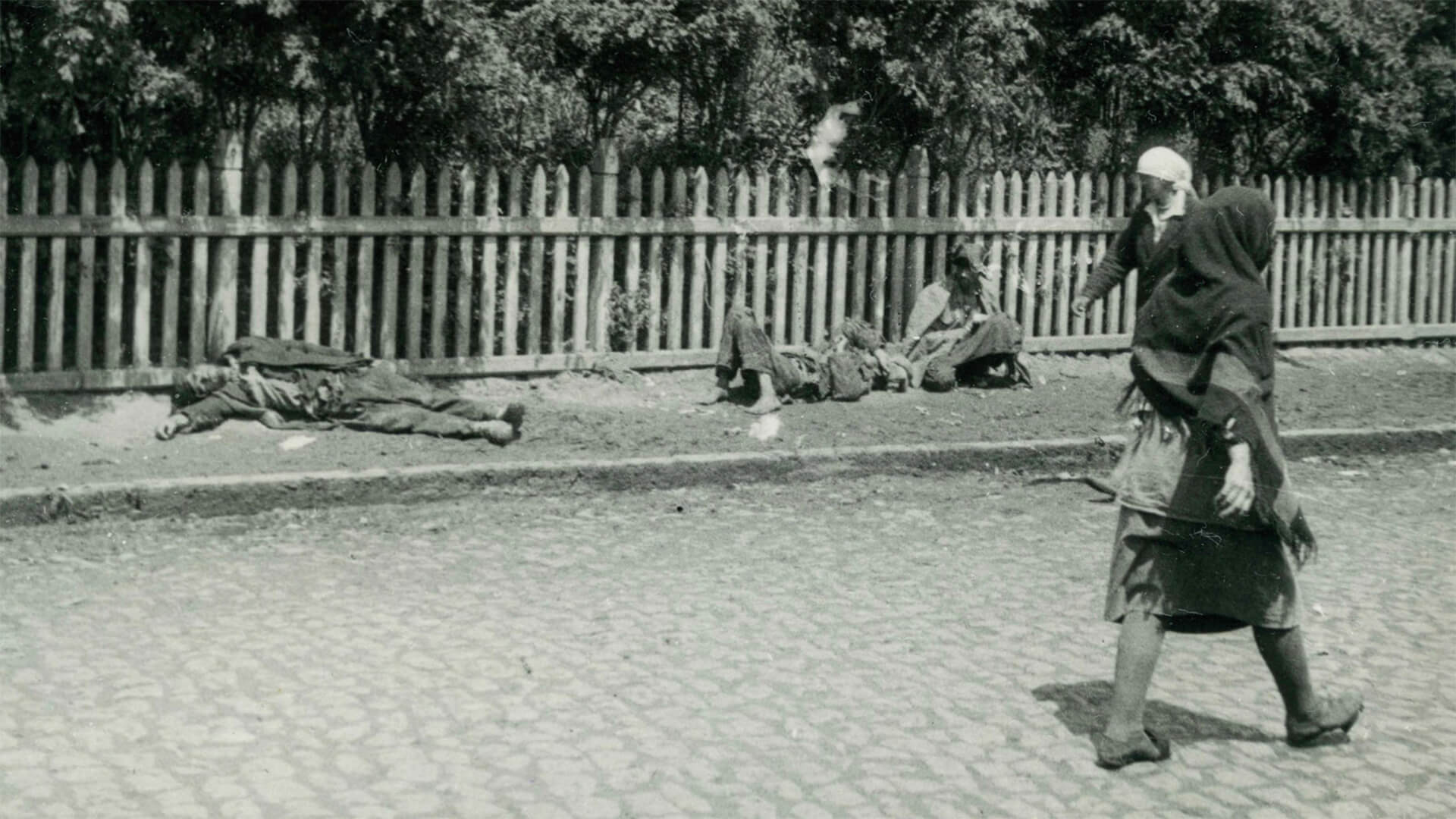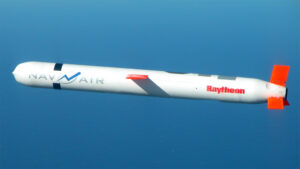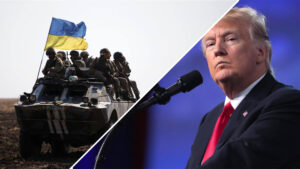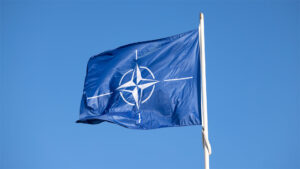In the 1930s, the Soviet Union attempted to crush the Ukrainians in a genocide known to history as the Holodomor.
Key to the strategy was deliberate efforts to destroy agricultural production to ensure famine. In all, 4 million Ukrainians perished. Today’s Russia is about to switch gears in the ongoing military conflict and attempt a second Holodomor.
Here’s how we should expect the next chapter to begin…
Prefer to read the transcript of the video? Click here
Here at Zeihan On Geopolitics we select a single charity to sponsor. We have two criteria:
First, we look across the world and use our skill sets to identify where the needs are most acute. Second, we look for an institution with preexisting networks for both materials gathering and aid distribution. That way we know every cent of our donation is not simply going directly to where help is needed most, but our donations serve as a force multiplier for a system already in existence. Then we give what we can.
Today, our chosen charity is a group called Medshare, which provides emergency medical services to communities in need, with a very heavy emphasis on locations facing acute crises. Medshare operates right in the thick of it. Until future notice, every cent we earn from every book we sell in every format through every retailer is going to Medshare’s Ukraine fund.
And then there’s you.
Our newsletters and videologues are not only free, they will always be free. We also will never share your contact information with anyone. All we ask is that if you find one of our releases in any way useful, that you make a donation to Medshare. Over one third of Ukraine’s pre-war population has either been forced from their homes, kidnapped and shipped to Russia, or is trying to survive in occupied lands. This is our way to help who we can. Please, join us.
CLICK HERE TO SUPPORT MEDSHARE’S UKRAINE FUND
CLICK HERE TO SUPPORT MEDSHARE’S EFFORTS GLOBALLY
TRANSCIPT
Hey, everyone. Peter Zeihan here. Coming to you from Calgary on the Bow River, just outside of downtown. Today, I wanted to talk very briefly about what’s going on with Ukraine and the path of the war, not necessarily from a military point of view, but from an economic and strategic point of view.
One of the key things to remember about the war right now is that the Ukrainians are wildly outmanned. The Russians have a population of roughly 140 million, and it has no problem throwing bodies and nearly limitless numbers into the war effort. Right now, we have had a first stage mobilization of about 300,000. There’s another stage of at least 500,000 coming probably within a few days, which means that by the time we get to May and June, the Russians will have a minimum of another half a million men in the field. And it’s not clear that the Ukrainians have enough bullets to take them all out. In this sort of conflict where the Ukrainians simply can’t trade a body for a body. It’s more than training, it’s more than morale, it’s more than equipment. It’s about speed, it’s about mobility. So as important as rockets and missiles and jets and tanks are and they are all critical to Ukrainian survival here, ultimately what the Ukrainians really need is the ability to move when the Russians can’t.
Now, in this, they’ve won at least half the battle. Russian forces historically and currently can really only resupply by rail. That is how the Russian system has always worked. They don’t have a Russian road network, so they have to move things by train. And when the Kerch Bridge was taken out last year, the Russians lost their primary method of supplying to the southern front. They’ve had to make do with trucks. But the Ukrainians have been attacking the truck fleet, the tactical support truck fleet of the military ever since the very beginning of the conflict. The Russians began the war with 3000 military support trucks. They’re probably down to only about 500 now. And so they’ve been going back to Russia and confiscating things like vans and city buses in order to ferry troops and even artillery shells around the front. And I got to say, when a city bus loaded with artillery shells hits a bump, things get a little exciting. But that’s not enough for the Ukrainians. They have to inflict casualties on the Russians in excess, minimum excess of 5 to 1. And we’re just not there yet. If the pace continues, if this 3 to 1, 4 to 1 ratio, that we’re seeing of Ukrainian fatalities versus Russian fatalities continues. The Ukrainians will lose in time. They have to turn this into a war of movement. And in that, the weather has really not been very cooperative. You can split the seasons in Ukraine to basically four chunks. You got your summer when the ground is hard and dry, you’ve got the winter when it’s hard and frozen. And then in the spring and the autumn, you have what are called mud seasons where it’s just not cold enough to freeze the ground, but it’s wet enough that everybody gets stuck. So if you’re on foot, you get stuck in mud. If you’re in a vehicle, all that mud turns your treads into just mush. And that is exactly the scenario the Russians found themselves in in the first part of the war. This is the primary reason that the assault on Kyiv failed and the primary reason that the Russians ended up abandoning their entire position in the northern part of the country. Their troops, their army, their tanks were limited to just being on the road. And that made it very easy for infantry to pick them out with things like javelins.
In this sort of situation, what do you do? Well, you wait for it to be winter and then you attack when the ground is hard and you use your superior air mobility to cut Russian logistic lines. I’ve been expecting to push south, not necessarily to reach the sea, but simply to get all of the roads within artillery range so that the Ukrainians can cut the supply line once and for all. That has not happened because it has been freakishly warm in Ukraine for several weeks now. Now here in Calgary, it has not been above freezing for over a month and so the river is frozen for the most part.
But in Kyiv, it hasn’t gotten below freezing during the day for over a month. And in that sort of situation, they’re experiencing a wildly, unexpectedly, unprecedentedly extended mud season. Now, this could change in ten days, although the extended forecast doesn’t suggest it. And we could get a hard freeze before the end of January, in which case February, which is normally part of the frozen season, could still see a lot of dynamism out of the Ukrainians. But that is not in the cards at the moment.
And that means it’s time to start thinking about what the next stage of the Russian assault happens to look like. At the moment, the Russians are waiting for spring so they can throw those extra half a million men and just come at the Ukrainians from multiple angles. And if they do enough with enough, then it really doesn’t matter if the Ukrainians are mobile, they’ll be overwhelmed and that could be the end of the war right there. So right now, the Russians are just biding their time. They know they lack the logistical support to do any sort of broad scale, multifaceted, complicated assault right now. So they’re just throwing some bodies at a few places. If you’ve seen Bakhmut in the news, that’s exactly what’s happening there. But mostly the Russians are kind of sitting on their hands and waiting, but they are doing what they can to destroy morale and destroy the Ukrainian economy and kill as many Ukrainian civilians as possible. They’re using drones. They’re using fighter launched missiles. They’re using cruise missiles. And they’ve started to use ballistic missiles to target specifically Ukrainian physical infrastructure, most notably electricity generating plants.
They’re thinking is if they knock the electricity off in the depths of winter, you will, number one, kill a lot of civilians. Number two, you will demoralize the soldiers because if they see that their families back home are losing power, they’ve got to wonder why they’re on the front line if the front lines aren’t very dynamic. It’s an utterly despicable and inhumane strategy, but that doesn’t mean it’s stupid. And right now, the Ukrainians are suffering over and over and over again from these assaults. But once we get to spring, the Russians are going to change targets, not strategies, but targets. In addition to pushing for a broad based assault on multiple axes. They will then shift their targeting from electricity infrastructure to something else, because in the summer, taking out the power doesn’t have the same impact that you do it on the winter. Ukraine is just not that hot, that it needs mass electricity, electricity for air conditioning. I mean, this isn’t Alabama or Texas. In the winter, you have to have it for heating. But in the summer, it’s not so important.
So at that point, expect the Russians to change their targeting from electricity infrastructure to something a lot more insidious. Agricultural infrastructure targeting the factories that make the parts that repair the tractors, targeting the tractors themselves, targeting cold chain systems, targeting grain silos, targeting ports.
Right now, the Ukrainians have a series of deals that have been brokered by the U.N. with the Russians for getting grain out of their ports. It’s mostly been corn because it’s denser, both in terms of weight and in terms of economics than wheat. Wheat exports have fallen to almost nothing. But if the Russians start targeting their ability to produce and transport grain at all over the summer, then any country that is dependent on what has historically been the world’s fourth largest corn exporter and fifth largest wheat exporter is going to have a really, really tough year.
We should probably expect to see targets shifting in May and into June, and there’ll be obvious the impact that this is having by the time we get to September and October. And then the countries that would normally import from Ukraine come October, November, December are going to realize it’s just not there. Most of those countries are in Africa, some are in South Asia, and the one I am by far the most worried about is Egypt.
Egypt is poor. They import over half the grains they need to survive, mostly wheat. The wheat is already offline. And so we should expect to see significant upheaval, economic, humanitarian, political, across the Arab world and into South Asia and in sub-Saharan Africa, all later, in the second half of 2023. And at this point, there’s just not a lot that anyone can do about it.
Fertilizer supplies are already constrained, and the Black Sea is probably going to become a no go zone once the Russians start targeting the ports altogether. I don’t have a cheery note to end this one on. This is just pretty dark. I’ll see you guys later.









